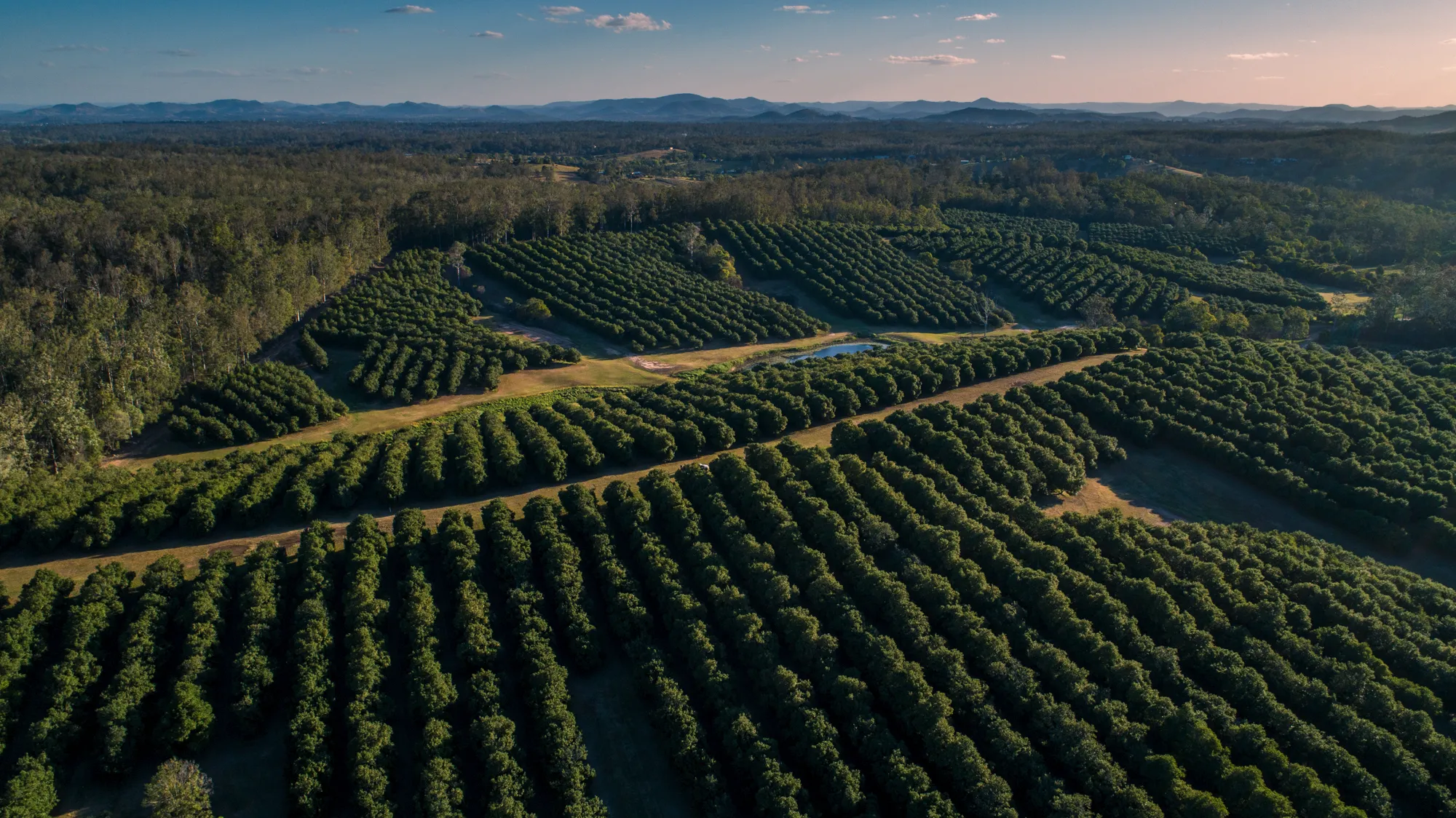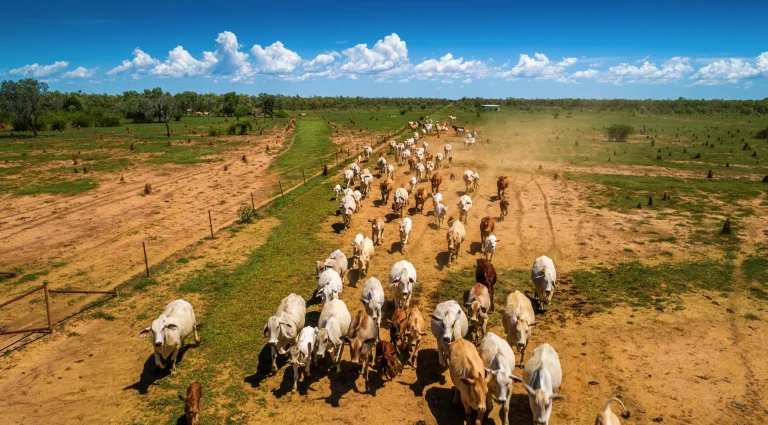Guidelines for Investing in the Australian Livestock Industry: Strategic Investment Framework
The Australian livestock industry represents one of the world’s most sophisticated and profitable agricultural sectors, offering diverse investment opportunities across cattle, sheep, and emerging livestock enterprises that capitalize on premium genetics, advanced production systems, and strong export market positioning. Understanding comprehensive guidelines for investing in the Australian livestock industry becomes essential for both domestic and international investors seeking exposure to agricultural assets with strong fundamentals and growth potential. At Agribusiness Horizons, we provide specialized investment guidance that combines deep livestock industry knowledge with comprehensive market analysis and strategic planning expertise, ensuring investors make informed decisions that align with their objectives while managing operational and market risks effectively. This framework examines the critical considerations, investment approaches, and strategic factors that determine success in livestock industry investments.
Australia’s livestock sector benefits from favorable climate conditions, advanced genetic resources, sophisticated management systems, and established export relationships that create competitive advantages and investment opportunities across diverse geographic regions and production systems. Professional investment guidance ensures optimal positioning within this complex and rewarding sector.
Australian Livestock Industry Overview
Australia’s livestock industry encompasses diverse enterprises across extensive pastoral regions, intensive production systems, and specialized breeding operations that serve both domestic consumption and export markets with premium positioning and quality recognition. The industry’s scale and sophistication create numerous investment pathways suitable for different capital levels and risk profiles.
Beef cattle operations dominate Australia’s livestock landscape through extensive grazing systems, feedlot enterprises, and integrated breeding programs that produce premium beef for domestic and international markets. The sector’s export orientation provides access to high-value Asian markets where Australian beef commands premium pricing.
Sheep enterprises encompass both wool and meat production systems that leverage Australia’s competitive advantages in genetic quality, production efficiency, and market positioning. The dual-purpose nature of sheep operations provides diversification benefits and multiple revenue streams that enhance investment stability.
Emerging livestock sectors including goats, deer, and specialty animals offer niche investment opportunities with potential for premium pricing and market development. These sectors often require specialized knowledge but may provide superior returns for appropriately positioned investments.
Geographic diversity across Australian livestock regions enables investment portfolio diversification through exposure to different climate zones, production systems, and market positioning strategies that reduce overall investment risk while accessing various growth opportunities.
Industry consolidation trends create opportunities for strategic acquisitions and operational scale improvements that enhance efficiency and competitive positioning for investors targeting larger livestock enterprises and integrated operations.
Regional Investment Opportunities
Different Australian regions offer distinct livestock investment advantages based on climate conditions, soil quality, infrastructure development, and market access that influence operational efficiency, production costs, and investment returns across diverse livestock enterprises.
Northern Australia’s extensive pastoral country provides large-scale cattle investment opportunities with competitive land costs, favorable breeding conditions, and operational scale advantages. The region’s proximity to Asian export markets creates logistical benefits and market access advantages.
Southern Australia’s higher rainfall regions support intensive livestock operations including prime lamb production, cattle finishing enterprises, and specialized breeding programs that capitalize on superior pasture quality and market proximity for premium product positioning.
Western Australia’s diverse agricultural zones enable both extensive pastoral operations and intensive livestock enterprises that benefit from modern infrastructure, efficient transport systems, and established market relationships providing operational advantages and competitive positioning.
Queensland’s tropical and subtropical conditions favor year-round grazing systems, breeding operations, and backgrounding enterprises that optimize genetic improvement and production efficiency while accessing established processing and export infrastructure.
New South Wales provides diverse livestock opportunities across extensive western regions and intensive coastal areas that enable portfolio diversification and operational flexibility while accessing major domestic markets and processing facilities.
Victoria’s intensive agricultural regions support premium livestock enterprises including dairy operations, prime lamb production, and cattle finishing systems that capitalize on superior pasture quality and proximity to major population centers.
Investment Structure and Business Models
Guidelines for investing in the Australian livestock industry encompass diverse investment structures and business models that optimize capital efficiency while managing operational complexity and risk exposure across different livestock enterprises and market segments.
Direct property ownership provides maximum operational control and value capture but requires comprehensive management expertise, substantial capital commitment, and ongoing operational involvement for successful livestock enterprise management.
Management agreements and agistment arrangements enable livestock investment without direct property ownership while providing operational flexibility and reduced capital requirements through partnerships with experienced livestock operators and property owners.
Livestock trading and turnover enterprises focus on buying, developing, and selling livestock rather than property ownership, providing shorter investment cycles and higher liquidity while requiring specialized market knowledge and operational expertise.
Breeding operations and genetic development programs provide long-term investment opportunities through superior genetics, registration systems, and premium market positioning that create intellectual property value and ongoing revenue streams.
Feed services and backgrounding operations provide value-added services to livestock owners while generating consistent returns through operational efficiency and strategic market positioning within livestock supply chains.
Integrated supply chain investments encompass multiple stages from breeding through processing that capture margins across the value chain while providing operational control and market positioning advantages.
Market Analysis and Commodity Cycles
Understanding market dynamics and commodity cycles becomes essential for successful livestock investment decisions, requiring comprehensive analysis of supply and demand fundamentals, international trade patterns, and economic factors that influence livestock prices and investment returns.
Cattle price cycles typically follow supply-driven patterns influenced by breeding decisions, seasonal conditions, and international demand that create investment opportunities during different cycle phases. Understanding cycle timing helps optimize acquisition and disposal strategies.
Global beef demand trends driven by population growth, income increases, and dietary preferences in key export markets influence long-term pricing patterns and investment attractiveness for Australian beef enterprises positioned to access premium international markets.
Feed grain costs and availability significantly influence livestock profitability through their impact on operational costs and production systems. Understanding feed markets helps assess operational risks and optimization opportunities for different livestock enterprises.
Currency exchange rates affect export competitiveness and domestic pricing patterns while influencing the attractiveness of Australian livestock investments to international investors and the relative profitability of export-oriented enterprises.
Processing capacity and industry infrastructure development influence market access and pricing while affecting competitive positioning for livestock enterprises across different regions and production systems.
Consumer preference trends including demand for grass-fed, organic, and sustainable livestock products create premium market opportunities for appropriately positioned livestock enterprises with specialized production systems.
Due Diligence and Property Assessment
Comprehensive due diligence represents a critical component of livestock investment success, requiring detailed evaluation of property characteristics, operational systems, and financial performance that determine investment viability and return potential across different livestock enterprises.
Land quality assessment encompasses soil types, pasture conditions, and carrying capacity analysis that determines stocking rates and production potential under various management scenarios and seasonal conditions throughout different investment periods.
Water resource evaluation covers bore capacity, dam storage, and reticulation systems that support livestock requirements during seasonal variations while providing operational security and drought resilience planning for sustainable investment outcomes.
Infrastructure condition assessment includes livestock handling facilities, fencing systems, accommodation facilities, and machinery requirements that influence operational efficiency and capital investment needs for successful livestock enterprise management.
Livestock quality evaluation encompasses genetic merit, production records, and health status that determine current asset values and future productivity potential while providing insights into management effectiveness and operational optimization opportunities.
Operational performance analysis examines historical production records, cost structures, and profitability trends that provide baseline information for investment projections and operational improvement planning throughout different market cycles.
| Investment Category | Key Assessment Criteria | Risk Factors | Return Characteristics |
|---|---|---|---|
| Extensive Grazing | Carrying capacity, water security | Weather, commodity cycles | Moderate returns, capital appreciation |
| Intensive Operations | Infrastructure quality, market access | Operational complexity, input costs | Higher returns, management intensive |
| Breeding Enterprises | Genetic quality, registration systems | Market demand, disease risks | Premium returns, long-term commitment |
| Trading Operations | Market knowledge, liquidity | Price volatility, timing risks | Variable returns, short-term focus |
Environmental compliance and sustainability considerations encompass conservation practices, chemical usage, and regulatory requirements that affect operational costs and market positioning while ensuring long-term viability and responsible investment practices.
Agribusiness Horizons’ Livestock Investment Expertise
At Agribusiness Horizons, our comprehensive approach to guidelines for investing in the Australian livestock industry combines deep sector knowledge with sophisticated investment analysis and strategic planning expertise that helps clients identify opportunities aligned with their investment objectives and risk tolerance. We understand that livestock investments require specialized knowledge of production systems, market dynamics, and operational management.
Our investment analysis methodology incorporates detailed property evaluation, market assessment, and financial modeling that identifies attractive livestock investment opportunities across diverse enterprises and geographic regions throughout Australia’s extensive livestock sector.
Our livestock industry expertise encompasses cattle, sheep, and emerging livestock sectors with comprehensive understanding of production systems, genetic improvement programs, and market positioning strategies that influence investment success and long-term profitability.
Our transaction services coordinate all aspects of livestock investment processes including property identification, due diligence management, negotiation support, and settlement coordination while working closely with technical specialists and industry experts.
Our ongoing advisory services provide market intelligence, operational guidance, and strategic planning support that helps clients optimize livestock investment performance while managing risks and identifying value enhancement opportunities throughout investment periods.
Financial Modeling and Investment Returns
Sophisticated financial analysis becomes essential for livestock investment success, requiring comprehensive modeling that accounts for production cycles, seasonal variations, and market volatility while projecting realistic returns and cash flow patterns across different investment scenarios.
Revenue modeling encompasses livestock sales, breeding income, and potential diversification opportunities while accounting for market cycles and seasonal patterns that influence income timing and sustainability throughout different economic conditions.
Cost structure analysis covers variable expenses including feed, veterinary, and labor costs plus fixed expenses including rates, insurance, and infrastructure maintenance that determine operational margins and profitability projections for different livestock enterprises.
Capital expenditure planning includes infrastructure maintenance, equipment replacement, and facility upgrades required to maintain operational efficiency and competitive positioning while meeting regulatory requirements and industry standards.
Cash flow projections account for seasonal patterns, production cycles, and market timing that influence liquidity requirements and working capital management throughout different phases of livestock investment cycles.
Return analysis incorporates capital appreciation, operational returns, and tax considerations while comparing investment alternatives and assessing risk-adjusted returns for different livestock investment strategies and enterprise types.
Sensitivity analysis evaluates various scenarios including commodity price changes, seasonal variations, and operational modifications that help assess investment resilience and optimization opportunities under different market conditions.
Risk Management and Mitigation Strategies
Comprehensive risk management becomes essential for livestock investment protection, requiring understanding of operational, market, and environmental risks while developing appropriate mitigation strategies that protect investment values and ensure operational continuity.
Weather risks including drought, floods, and extreme temperatures affect pasture production, livestock performance, and operational costs while requiring adaptive management strategies and contingency planning for sustainable investment outcomes.
Market risks encompass commodity price volatility, demand fluctuations, and competitive pressures that influence revenue projections and investment returns while requiring hedging strategies and diversification planning for risk mitigation.
Operational risks cover equipment failure, labor availability, and management succession that affect production consistency and operational efficiency while requiring professional management systems and contingency planning for business continuity.
Biosecurity risks include disease outbreaks, quarantine restrictions, and trade limitations that could significantly impact livestock values and market access while requiring preventive protocols and insurance coverage for protection.
Environmental risks encompass regulatory compliance, conservation requirements, and climate change adaptation that affect operational practices and long-term sustainability while requiring proactive management and adaptation strategies.
Financial risks include debt servicing, cash flow variability, and interest rate exposure that affect investment stability and return consistency while requiring appropriate financial structuring and contingency planning.
Technology Integration and Innovation
Modern livestock operations increasingly incorporate advanced technologies that enhance production efficiency, animal welfare, and operational management while providing competitive advantages and investment return optimization opportunities for forward-thinking livestock enterprises.
Precision livestock management systems enable real-time monitoring of animal health, reproduction status, and performance indicators that optimize management decisions while improving operational efficiency and animal welfare outcomes.
Genetic technologies including artificial insemination, embryo transfer, and genomic testing enhance breeding program effectiveness while accelerating genetic improvement and providing competitive advantages in livestock quality and performance.
Pasture management technologies including remote sensing, soil monitoring, and grazing management systems optimize land utilization while improving sustainability and production efficiency for enhanced investment returns.
Data management platforms integrate operational information from multiple sources to provide comprehensive decision-support capabilities while enabling evidence-based management and performance optimization across livestock enterprises.
Automation systems including feeding equipment, water management, and handling facilities reduce labor requirements while improving operational consistency and animal welfare for enhanced efficiency and competitive positioning.
Sustainability and Environmental Stewardship
Environmental stewardship requirements increasingly influence livestock operations through regulatory compliance obligations and market expectations that affect operational costs and revenue opportunities while supporting long-term investment sustainability.
Carbon sequestration opportunities through improved grazing management and land restoration provide additional revenue streams while supporting environmental objectives and regulatory compliance for enhanced investment attractiveness.
Biodiversity conservation programs including habitat protection and species management may provide funding opportunities while enhancing property values and operational sustainability through integrated land management approaches.
Water quality management including erosion control and nutrient management affects environmental compliance and operational sustainability while supporting long-term productivity and regulatory approval for responsible investment practices.
Sustainable grazing practices including rotational systems and stocking rate optimization enhance long-term productivity while reducing environmental impact and supporting certification programs for premium market access.
Animal welfare standards encompass housing, handling, and health management protocols that meet industry requirements and consumer expectations while supporting market access and premium positioning for responsible livestock operations.
Market Positioning and Value Enhancement
Strategic market positioning significantly influences livestock investment returns through premium pricing opportunities, market access advantages, and brand value development that enhance overall investment attractiveness and profitability potential.
Quality assurance programs including certification systems and traceability protocols enable premium market access while meeting consumer expectations and regulatory requirements for enhanced market positioning and pricing advantages.
Genetic improvement programs and registration systems provide competitive advantages through superior livestock quality while creating intellectual property value and ongoing revenue streams from genetic sales and licensing.
Direct marketing opportunities including farm gate sales, online platforms, and specialty markets enable margin capture while providing market differentiation and customer relationship development for enhanced profitability.
Value-added processing including on-farm facilities and cooperative arrangements capture additional margins while providing market control and product differentiation for enhanced investment returns and operational integration.
Brand development and marketing strategies create competitive advantages while supporting premium positioning and customer loyalty for long-term market success and investment value enhancement.
Exit Strategies and Investment Liquidity
Successful livestock investments require comprehensive exit strategy planning that maximizes investment returns while maintaining operational flexibility throughout ownership periods and optimizing transaction timing for market advantage.
Property appreciation strategies including infrastructure improvement and operational optimization enhance asset values while providing ongoing returns during ownership periods for enhanced investment outcomes and exit valuations.
Portfolio development and integration strategies enable livestock properties to contribute to broader agricultural investment portfolios while providing diversification benefits and operational synergies for enhanced overall performance.
Market timing considerations include commodity cycles, interest rate environments, and buyer demand patterns that affect sale prices and transaction success while requiring strategic planning for optimal exit execution.
Succession planning and management transition affect long-term ownership strategies while providing operational continuity and value preservation during ownership transitions and exit planning processes.
Conclusion and Strategic Investment Framework
Successfully implementing guidelines for investing in the Australian livestock industry requires comprehensive understanding of production systems, market dynamics, and operational requirements that determine investment success and long-term profitability within this sophisticated agricultural sector. The livestock industry’s complexity demands specialized expertise in agricultural production, market analysis, and risk management.
Consider these strategic questions when developing your livestock investment approach: How do your investment objectives and risk tolerance align with different livestock enterprise types and operational requirements? What level of operational involvement and management expertise do you require for successful livestock investment outcomes? How can you structure investments to optimize returns while managing operational and market risks effectively?
Australia’s livestock industry continues evolving through technological advancement, sustainability requirements, and changing global market dynamics that create both opportunities and challenges for investors. Working with experienced livestock industry specialists ensures comprehensive analysis and strategic positioning for investment success.
Contact Agribusiness Horizons today to discuss investment opportunities in Australia’s livestock industry. Our comprehensive guidelines, market intelligence, and transaction expertise ensure you identify and evaluate livestock investments that align with your objectives while maximizing potential returns and managing risks effectively throughout your investment journey.



